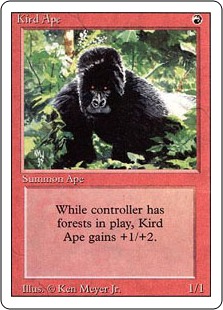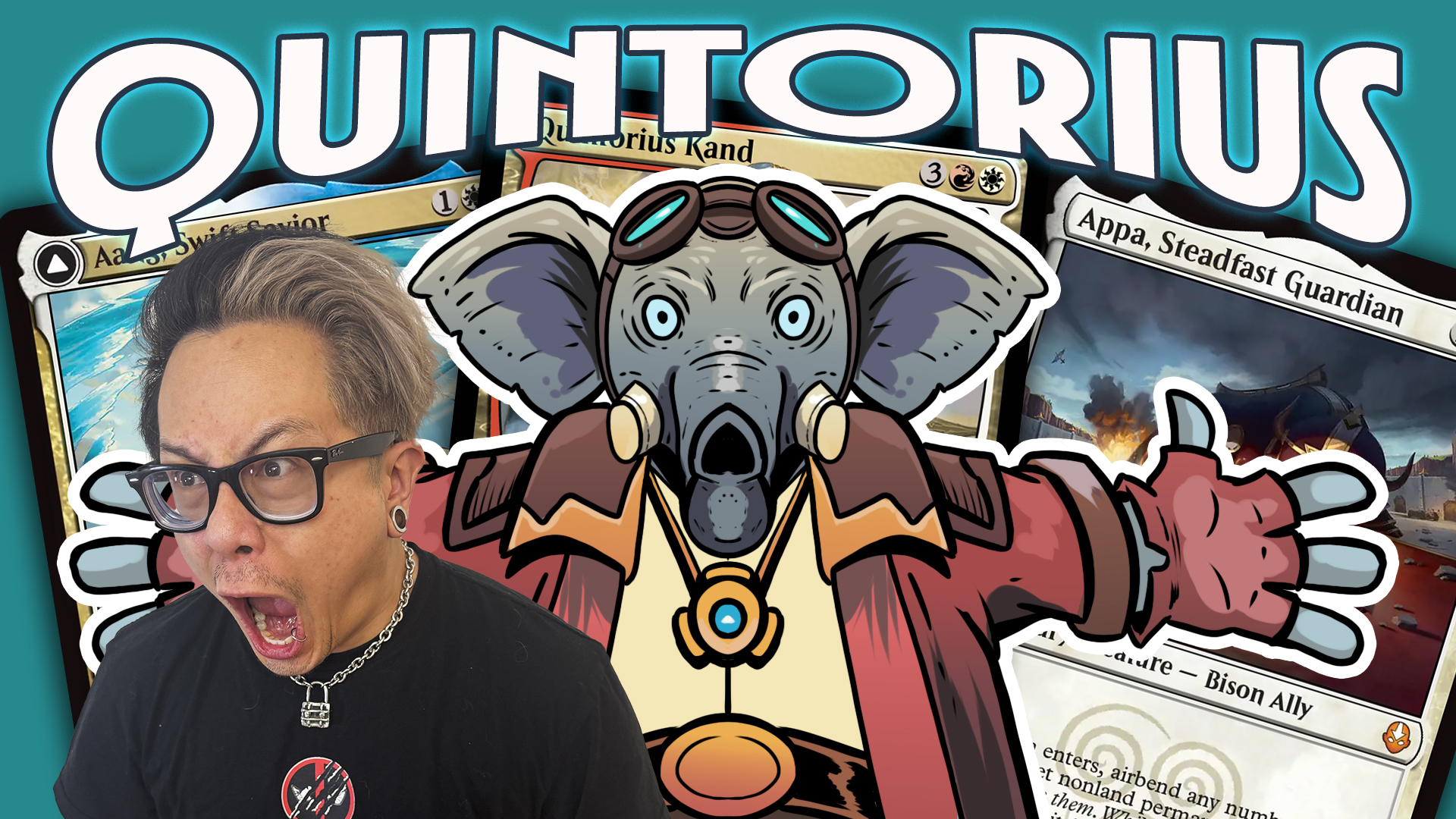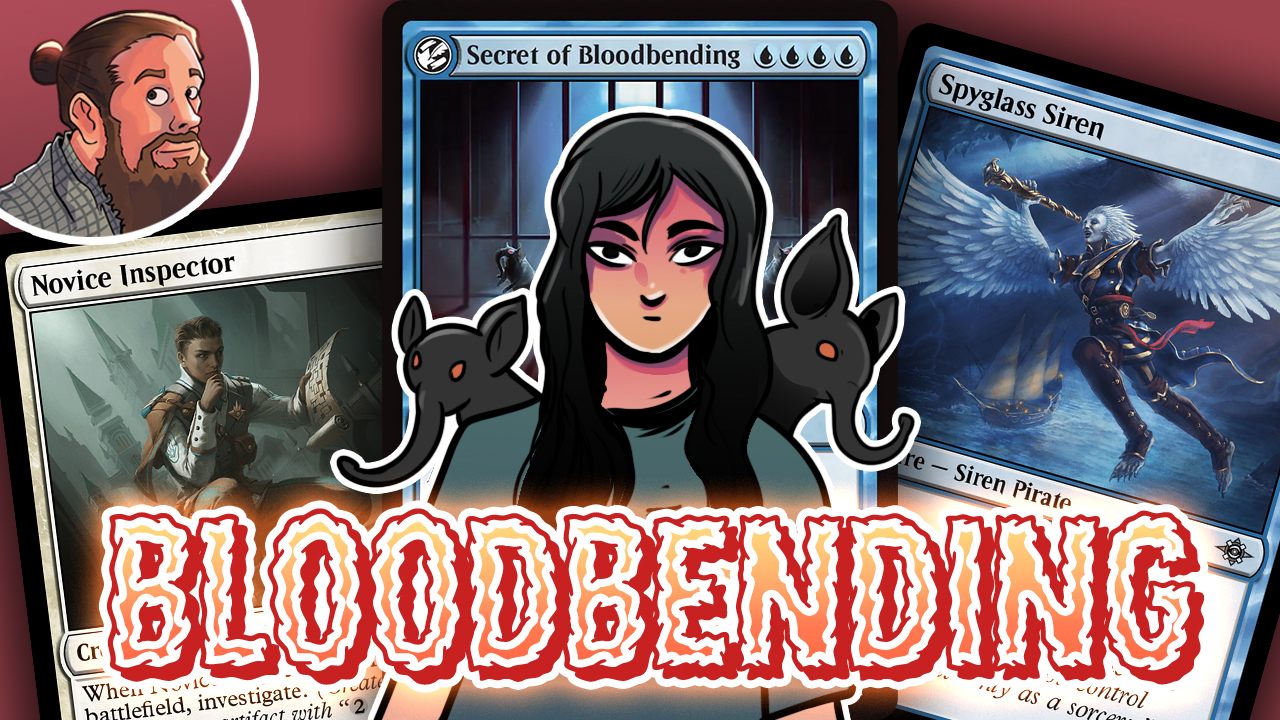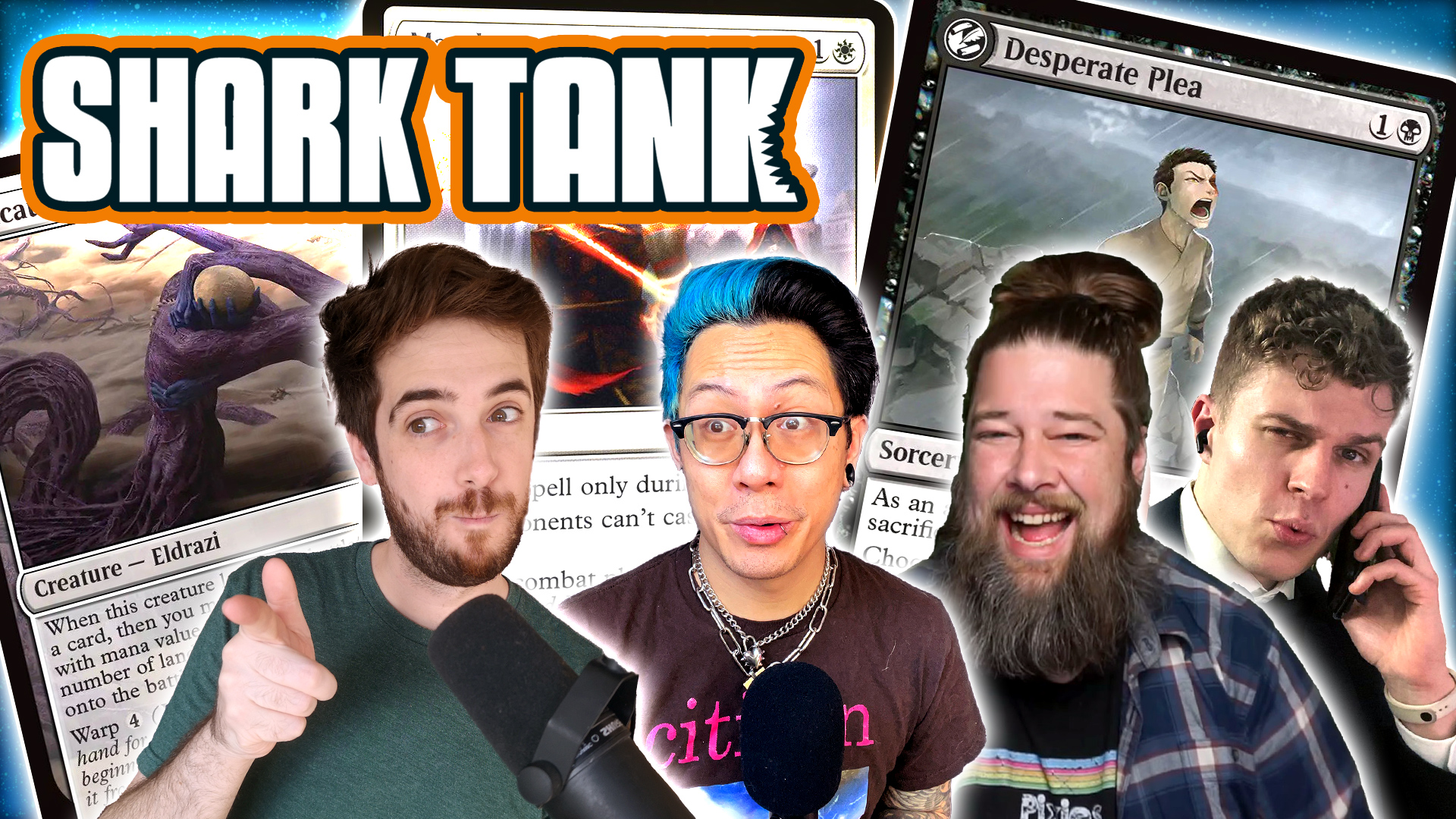Budget Magic: $100 (44 tix) GR HasteBraid (Modern)
안녕하세요, Budget Magic lovers, it's that time once again! A few weeks ago, Wizards shook up Modern with some huge unbannings, so this week, we're going to see if one of the newly unbanned cards has the power to enable a sweet aggressive budget deck! I briefly considered playing 59 Islands and one Jace, the Mind Sculptor, which would have just barely fit under our $100 budget, but figured this probably wouldn't work, so instead we're playing a deck I'm calling GR HasteBraid! The deck is basically a Zoo-style deck looking to get aggressive with hasty creatures backed by the two-for-one power of Bloodbraid Elf! The idea is that we curve out, attack our opponent every turn (often by surprise, thanks to haste), and then use things like Rancor and Lightning Bolt to push through the last few points of damage and close out the game! Can Bloodbraid Elf form the foundation of a powerful budget list? Let's get to the videos and find out; then, we'll talk more about the deck!
First, a quick reminder: if you enjoy the Budget Magic series and the other video content on MTGGoldfish, make sure to subscribe to the MTGGoldfish YouTube Channel to keep up on all the latest and greatest.
Budget Magic: GR HasteBraid (Modern)

The Deck
The basic idea of GR HasteBraid is simple. We're essentially a GR Aggro / Zoo deck that's looking to curve out from one mana to four mana, with Bloodbraid Elf as our finisher, often bringing with it a total of six hasty power and allowing us to kill our opponent out of nowhere. If our creatures don't offer enough damage to get the job done by themselves, we also have a few spells to finish off the opponent.
One-Drops


We've got two options in the one-drop slot. Experiment One is our best beater. When we curve out, it's usually attacking for two on Turn 2 and three on Turn 3 as sort of a build-your-own Wild Nacatl, which allows us to get in a ton of damage in the early game. Then, in the late game, the ability to remove counters to regenerate provides some natural wrath and spot-removal protection. While removing counters might seem like a major cost, the fact that we can simply play some more creatures and add more counters means it actually isn't all that painful. In fact, a single Bloodbraid Elf hitting another creature brings Experiment One from one power to three.
Meanwhile, Dryad Militant might look like a Savannah Lions, but exiling instants and sorceries that go to the graveyard is actually a meaningful upside. While getting spells out of the graveyard is especially helpful against various control decks with Snapcaster Mage, just getting cards out of the graveyard in an absolute sense is good in a strange number of matches, since quite a few decks take advantage of the delve mechanic and fewer total cards in the graveyard makes it harder for opponents to cast their Gurmag Anglers and Tasigur, the Golden Fang.
Two-Drops


Earthshaker Khenra and Strangleroot Geist are actually very similar in our deck. Both come down as hasty 2/1s, which allows us to attack for four damage on Turn 2 after playing a one-drop, and both come back from the graveyard, which gives them some amount of resilience to removal spells. This being said, both cards have one significant upside that the other is missing. For Earthshaker Khenra, the ability to make an opposing creature not block is important, allowing us to get in huge chunks of combat damage by surprise, even when our opponent thinks they left back enough defense to stay alive. Of course, this power comes with the downside that Earthshaker Khenra is really expensive to eternalize. We'll have some games where we simply don't reach six lands (considering we're a 20-land deck), so the ability to come back from the graveyard isn't relevant in every matchup. Meanwhile, Strangleroot Geist doesn't really help us force through big attacks, but it comes back from the graveyard for free as a 3/2 with haste, which means the opponent often has to spend two chump blockers or removal spells to get it off the table for good. Plus, Strangleroot Geist is especially punishing to wraths, since it immediately comes back and allows us to attack for a huge chunk of damage the very next turn.

Scavenging Ooze doesn't really fit the haste theme of our deck, but it's too efficient and powerful to pass up. While it is one of our least powerful creatures when it first enters the battlefield, it provides cover for a lot of potential problems. First, the ability to exile any card from the graveyard is a great hedge against reanimator strategies, Hollow One, and Snapcaster Mage decks. Second, Scavenging Ooze give us a mana sink, which helps to protect against flooding out. If we have nothing else going on, we can always spend our turn exiling some creatures, growing our Scavenging Ooze, and gaining some life. Speaking of gaining life, the final big upside of Scavenging Ooze is that it gives us some main-deck life gain, which can be helpful against Burn and other aggro decks. The combination of all of these small advantages more than makes up for the fact Scavenging Ooze is one of our least aggressive creatures and makes it great in our deck.
Three-Drops


In our three-drop slot, we have two three-power hasty attackers in Ahn-Crop Crasher and Boggart Ram-Gang. While Ahn-Crop Crasher is usually a bit better since exerting to make a creature not block is more important to our deck than wither, the combination of these cards gives us consistently explosive starts. Picture a typical curve: Experiment One on Turn 1. On Turn 2, Earthshaker Khenra, attack for four. On turn three, Ahn-Crop Crasher, attack for eight. Even discounting any damage our opponent does to themselves with fetch lands and shock lands, this puts our opponent in a position where they are very likely dead on Turn 4. More importantly, thanks to Earthshaker Khenra and Ahn-Crop Crasher, this curve works even if our opponent is playing blockers every turn!
Bloodbraid Elf

Finally, we have the namesake Bloodbraid Elf at the top end of our creature curve, which is the most powerful card in our deck and our best way of closing out the game. One of the biggest upsides of playing Bloodbraid Elf in a deck like ours is that there really aren't any bad cascade hits. The absolute worst hits in our deck are non-hasty two-powered creatures like Experiment One and Dryad Militant, and getting five power for four mana across two bodies is still a fine deal. On the other end of the scale, we have cards like Ahn-Crop Crasher that give us six power of hasty attackers out of the blue, along with making it so one of our opponent's creatures can't block.
While GR HasteBraid has a lot of weird fringe value, it doesn't have a lot of card advantage, so the cascade from Bloodbraid Elf also helps to make sure that we don't run out of action against removal-heavy decks. This makes Bloodbraid Elf very similar to a Collected Company in our deck, except we have no chance of whiffing and we know that one of the two creatures we hit will be a 3/2 with haste, which is an incredibly good deal. While our deck can certainly win without the power of Bloodbraid Elf, having access to the four-drop goes a long way toward making decks like our Zoo-esque build viable in the Modern format.
Other Stuff

Domri Rade is just a two-of, but it provides a ton of value, especially against grindy, controlling decks. Being only three mana, it's pretty easy to slip Domri Rade through counterspells, and as a planeswalker, it naturally dodges a lot of removal. After Domri Rade is on the battlefield, it draws us an extra creature about every other turn on average, since we have a massive 30 creatures in our deck, which means we have a steady stream of hasty threats to keep attacking our opponent's life total. In a pinch, we can use it to fight a blocker to force through even more damage, and if we ever ultimate, all of our creatures become nearly unbeatable threats. Plus, since Domri Rade is only three mana, it's cheap enough that we can cascade into it with Bloodbraid Elf, which makes it sort of the GR HasteBraid, budget-friendly version of Jund cascading into Liliana of the Veil.


If our creatures aren't enough to finish off the game, we've got a couple of spells to force through the final points of damage. Rancor is pretty insane in our deck, giving us a repeatable way of not just pumping our creatures but also giving them trample to get through opposing blockers. With all of our haste threats, a Rancor or two allows us to turn many of our creatures into pseudo-Ball Lightnings, hitting for massive, somewhat evasive damage out of nowhere. As for Lightning Bolt, it does double duty in our deck. In the early game, we can use it to clean blockers out of the way, and then in the late game, we can point it at our opponent's face to finish off the game. It's just too efficient not to play in an aggressive deck with red mana, which is why it's in GR HasteBraid.
Wrap-Up
Let's start with the good news: we finished our matches 4-1, and a lot of our games didn't even feel close. Our only loss was to Lantern Control, which is a weird matchup. It basically comes down to Ensnaring Bridge. If our opponent doesn't draw it in the first few turns (or if we can find an artifact-destruction spell after sideboarding), we win. On the other hand, we are drawing dead to Ensnaring Bridge in game one, and we only have a handful of ways to deal with it in games two and three. Regardless, GR HasteBraid felt extremely powerful and consistent.

Now for the bad news: we didn't cast a Bloodbraid Elf a single time. For some reason, we simply didn't draw our namesake card in our five matches. While it was disappointing to not get a chance to show off the four-drop's power, it actually makes the deck's performance even more impressive. In theory, if we pretend for a minute that Bloodbraid Elf isn't in our deck since we never played it, we just went 4-1 with a GR Haste deck that would cost about $68, making it pretty close to an ultra-budget deck for Modern. While Bloodbraid Elf seems insane in the deck, it's pretty clear that if you are trying to pinch pennies, you can get by without a playset (or even any copies at all) and still have success with the deck.



As for changes to make to the budget build now that we've played some matches, I'm not sure there are any. While the deck is very upgradable into a more tier-looking GR Zoo or Naya Zoo deck, most of the cards that would up the power level are too expensive for the budget. If you have fetches and shock lands, this is the easiest way to up the power. One of the weird aspects of our deck specifically is that the fact that we don't have fetches and shocks not only makes our mana worse but also limits the creatures we can play. Kird Ape and Wild Nacatl would both be great one-drops for the deck, but without fetch lands to make sure we have the right land types early in the game, they are simply too inconsistent for the budget build.
So, should you play GR HasteBraid? I think the answer is yes, assuming you like getting aggressive and attacking with creatures. We accidentally learned that the ultra-budget (no Bloodbraid Elf) version of the deck is pretty competitive, which makes it a great starting point for less than $70. The budget build is even better, and the deck has a pretty clear upgrade path that takes advantage of many of the most expensive cards in our deck. While upgrading the mana would be helpful, the deck as-is could certainly compete at the FNM level and could steal some wins in a more competitive setting. With a better mana base, something very similar could easily win leagues on Magic Online or post a solid performance at a Grand Prix or SCG Open. If you've been looking for a way to take advantage of Bloodbraid Elf on a budget, this is a great place to start!

For the ultra-budget build of GR HasteBraid, we mostly just drop the "Braid." We already know that the deck can function without Bloodbraid Elf from our videos, and considering it's—by far—the most expensive card in our deck, it's a necessary cut to get the deck down into the $50 range. We also drop Domri Rade and some of the Scavenging Oozes. In place of these cards, we get four copies of Bomat Courier as a way to generate card advantage after we empty our hand of cheap threats along with a playset of Reckless Bushwhacker, which didn't make the non-budget build because it doesn't work particularly well with the cascade of Bloodbraid Elf, since we can't surge when we cascade into it. The end result is basically a hasty GR Zoo / Aggro deck, which is very close to what we played in the videos, since we didn't actually cast a Bloodbraid Elf anyway. While the mana is going to be a bit troubling and should be the first part of the deck upgraded, the ultra-budget build should actually be fairly competitive, more so than most of the ultra-budget lists we have on Budget Magic.
Non-Budget Options


For our non-budget lists this week, we actually have two different upgrade paths. The first is the most similar to the deck we played in our videos, staying straight green-red and simply adding in some upgraded creatures (like Goblin Rabblemaster in the three-drop slot and Kird Ape as a one-drop) and Blood Moons as another good cascade hit from Bloodbraid Elf. The biggest expense, apart from the Blood Moons, is upgrading the mana base to fetches and shock lands, but the total price of under $450 still makes the deck reasonably cheap as far as competitive Modern decks are concerned.
Second, we have a very expensive Naya Landfall Zoo deck, which has similar game play to GR HasteBraid but splashes into white for Steppe Lynx, Thalia, Guardian of Thraben, and strong sideboard cards. While this build is powerful, it's also costly because the deck revolves around using fetch lands not just to fix mana but to generate landfall triggers, which means you need a massive 12 fetch lands. Plus, it plays Tarmogoyf, which still isn't cheap.
If you're looking to upgrade the budget build directly, the easiest things to do are to add Windswept Heath, Wooded Foothills, and Stomping Ground to the mana base; add some Blood Moons to the main deck or sideboard; and upgrade Stone Rain to Fulminator Mage and Tormod's Crypt to Relic of Progenitus. This also opens up Kird Ape as a potential one-drop, although both Experiment One and Dryad Militant were strong in our games, so I'm not sure they are worth cutting.
Conclusion
Anyway, that's all for today. As always, leave your thoughts, ideas, opinions, and suggestions in the comments, and you can reach me on Twitter @SaffronOlive or at SaffronOlive@MTGGoldfish.com.













